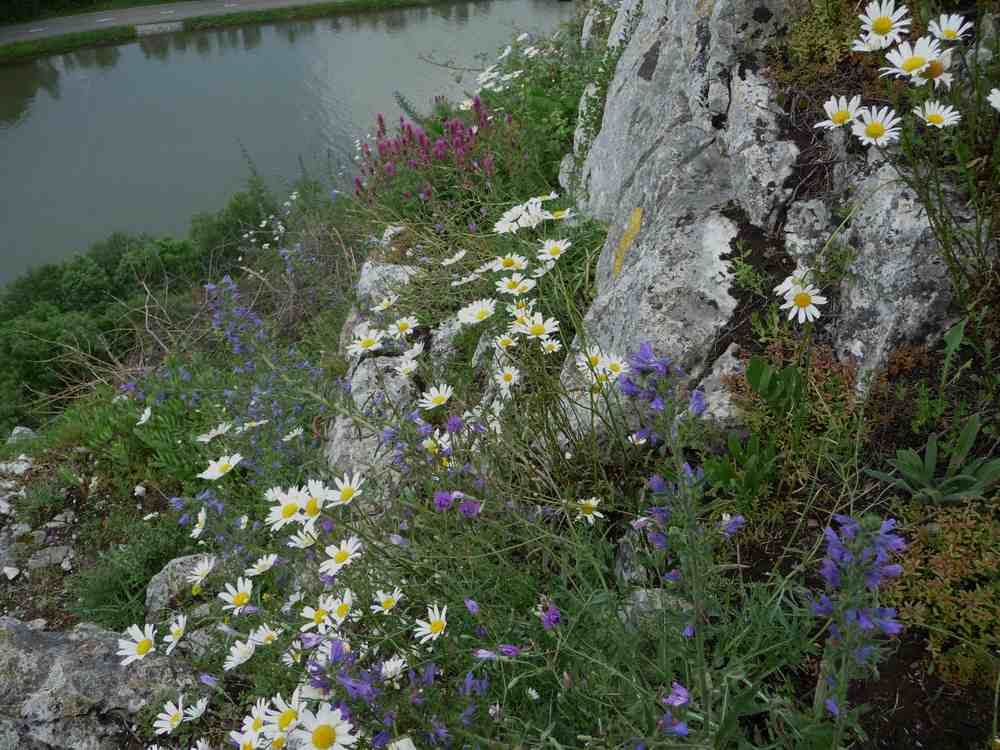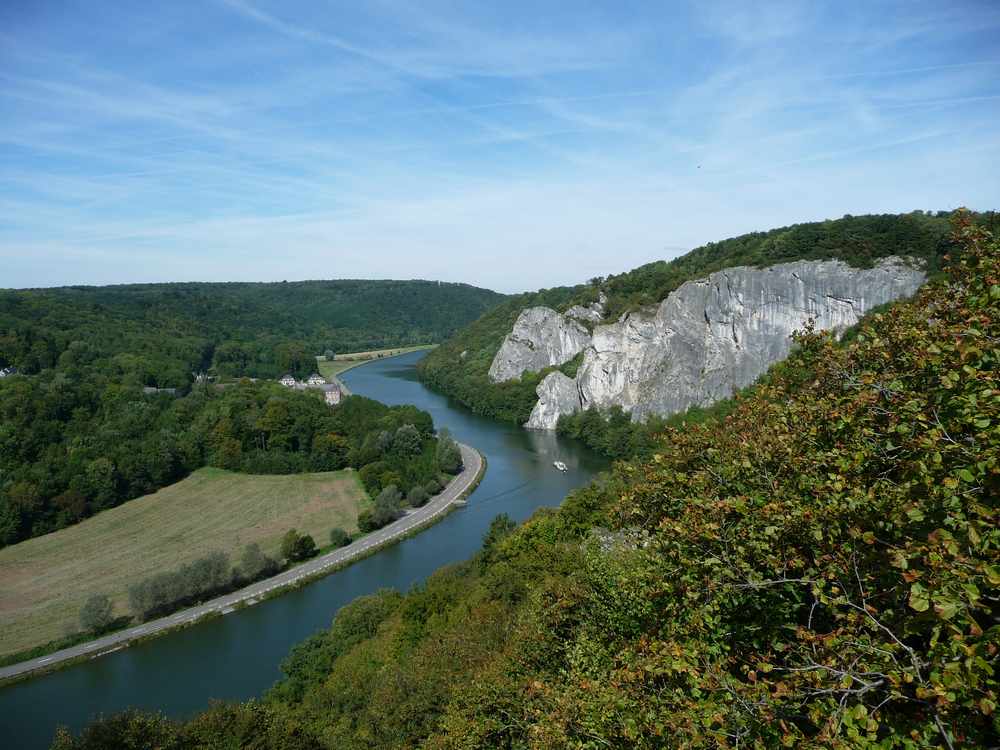Natura 2000 Management of limestone rocky cliffs
For millennia, the cliffs were, in their vast majority, inaccessible to humans, including those of our country (Belgium). In our country early exploration only dates from the year 1930.
For this reason ,the cliffs have been largely unaffected by major disturbances generated by human activity which has caused, elsewhere, the scarcity or even the disappearance of many species (e.g. fires, deforestation, overgrazing, hunting, urbanization, cultivation, pesticides ...) This tranquility and isolation have been such that in the past the cliffs have often been the last refuge for some species (Vidal). According to a generally accepted theory, and confirmed by pollen analysis, such was the case during the last glaciations (Ries, Würm). In various refuges not covered by ice, and thanks to favorable microclimates, the continued though limited existence of certain plant and animal varieties, was possible; for example Biscutella laevigata subsp varia, rare, but still present in some cliff faces of our country, and for which the migration and the chromosomal changes are currently being extensively studied. .
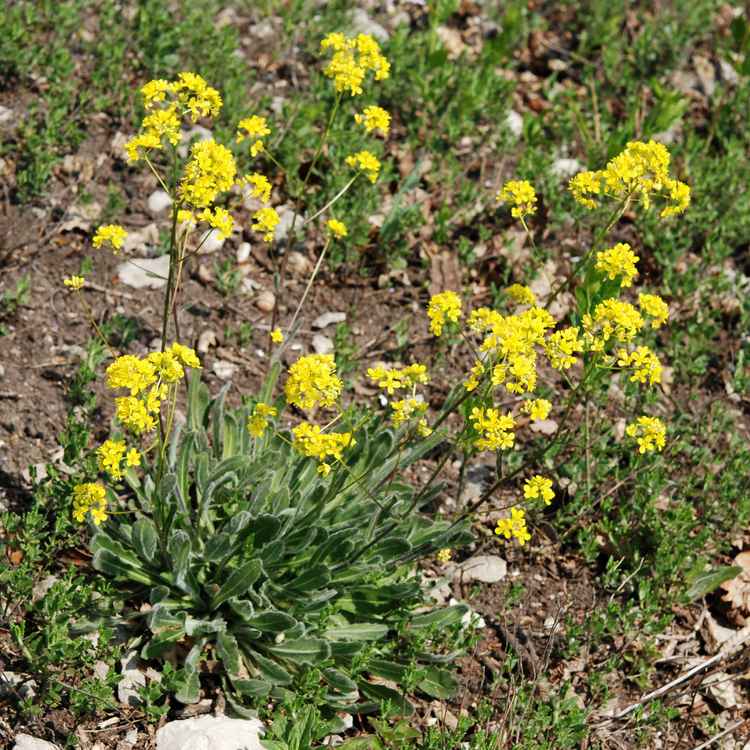
Biscutella laevigata subsp varia
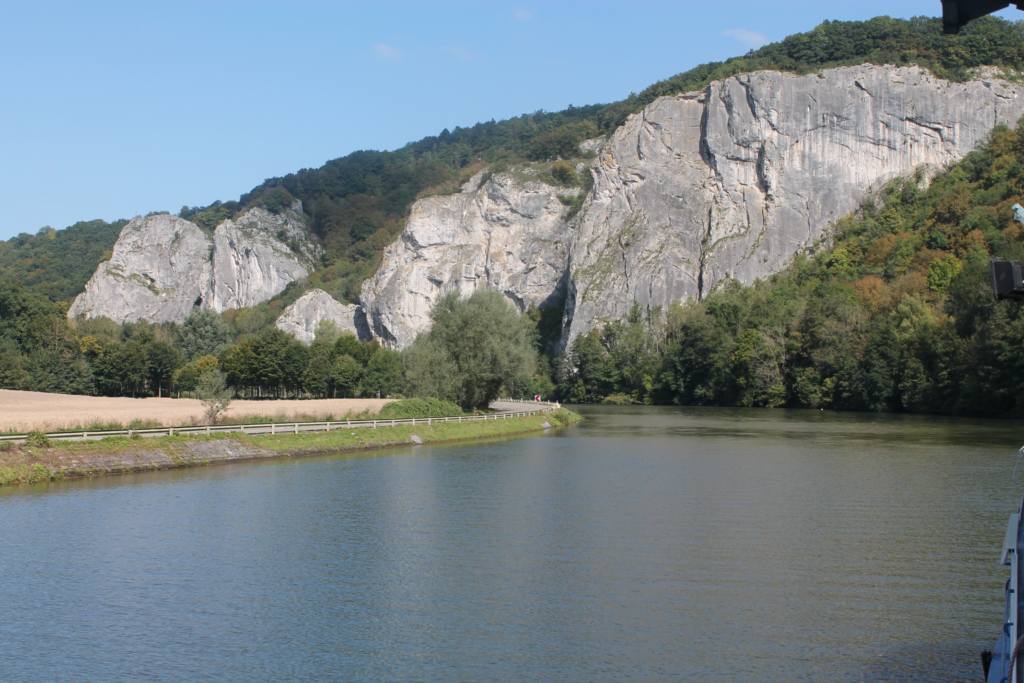
I. Ecosystems of rocky sites. .
It was found that in the ecosystems that have not been significantly modified by humans, the biodiversity has adapted to difficult living conditions. .
Unlike most natural habitats, cliff habitat does not correspond to a specific ecological definition, but is a mosaic of microhabitats. For this diversity there is therefore an important biodiversity potential that must be preserved .
In a cliff are always three essential elements: stand, uppermost plateau and a vertical, or near vertical, face generally composed of various types of rocks. In Belgium our observations mainly concerned the cliffs of limestone and dolomitic carbonate rock.
II- Importance of the flora of cliffs. .
Pristine cliffs are usually heavily colonized by lower plants such as mosses, algae, lichens, ferns. However, thanks to crevices, cracks and ledges, higher plants will develop there, especially species off xeric lawns, timber, dwarf shrubs, stonecrops and succulent plants.
The bibliographical research we have conducted on the flora of the cliffs showed that, regardless of their types and geographical locations, the cliffs have been little studied especially those hard to reach. Instead of climbing cliffs to sample the plants, most authors were in fact simply satisfied with a distant vision and it was only in 1997 that I personally undertook a comprehensive study of rock sites by climbing the most representative walls.
Regarding the importance of the flora of the cliffs as a vital element in maintaining biodiversity, it should be noted that:. .
1. By integrating multiple site factors such as, for example exposure to wind and sun, as well as differences of temperatures (cold in winter, hot and dry in summer) and responding to environmental conditions and their variations , flora and plant communities that exist there are often the last refuge for species that are very sensitive to competition.
2. This flora has a number of species of patrimonial interest (protected species), and some plant communities are habitats of Community interest (Natura 2000).
-8210 = Limestone rocky slopes with chasmophytic vegetation
-6110 = Rupicolous limestone lawns of Alysso Sedion-albi (priority)
3. Cliff ecosystems have played a major role in the preservation of certain plants, and plant community relics. Because of favorable microclimates they were able to withstand climate fluctuations caused by glacial– interglacial cycles. .
4. Being basic elements of the food chain, plants are an essential part of the ecosystem. Influenced by local weather conditions, they structure the habitats and the associated biological communities on which they depend. .
The vegetation off the cliffs is therefore an essential biological element of biodiversity.
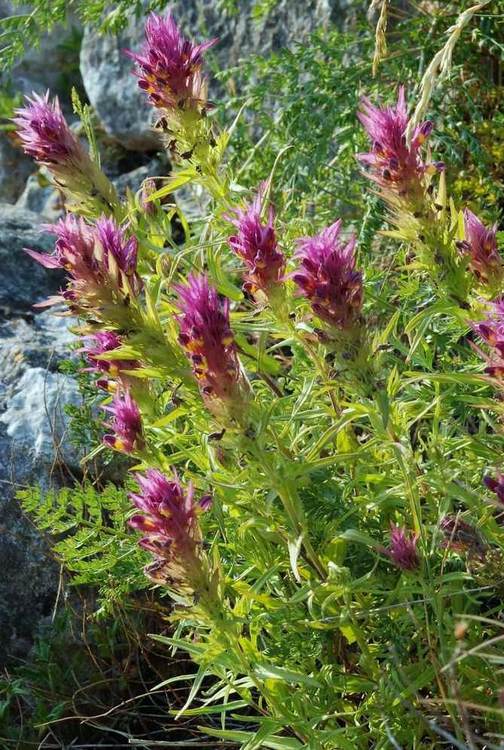
Melampyrum arvense
III - Evolutionary dynamics of plant communities on vertical surfaces and negative impact of human activities. .
1- Evolutionary dynamics. .
The uniqueness of these rock ecosystems is their vertical element and the important role of gravity (species dispersed by gravity), which will strongly influence the dynamics and composition of often highly specialized plant communities that meet there. The implementation and seed germination, are obviously much more random on a vertical support (Vidal) .We have therefore found that the verticality and the physical configuration of these surfaces play an important role in the dynamics of the succession of different stages of the succession runs .
This dynamic is always slow and the floristic evolution can remain unchanged for decades.
2- Negative impact caused by human activities. .
We considered two main types of vertical surfaces. .
a/ Vertical walls slightly fissured. .
The evolutionary dynamic is very slow, human use causing polishing of the rock no longer allows pioneer species like lichen to settle. During intensive cleaning the substrate was removed from holes and cracks, leading to the impossibility of a natural regeneration of species.
b / Vertical walls with many deep cracks. .
In heavily cracked walls, vertical and horizontal cracks, the introduction of plant species will be influenced by the depth of the cracks. The succession of different stages of the evolutionary chain (series??) will be faster - the crack depth will allow a regular increase in the thickness of the substrate and the maintenance of some moisture during drought. Again human use will have a negative action. Indeed most of the protected plant species are very sensitive to trampling and will also promote the phenomenon of anthropochori. We found a gradual regression of the procession flora and widespread colonization of the cracks by, for example, Poaceae well resistant to trampling, ivy, brambles, and invasive species, resulting in the steady disappearance of protected indigenous species. .
IV-Biodiversity and Life History. .
The term biodiversity encompasses the diversity of species, genetic diversity and habitat diversity.
Importance of genetic diversity. .
"The mixing of genes through sexual reproduction is the key to the evolution and adaptation of species to ever changing conditions. Cloning ensures effective dissemination but does not allow this plasticity and the plants that reproduce solely by vegetative propagation could not evolve, colonize new environments or adapt to changing conditions of an environment where they are already established". .
(Christophe Belin - Clinical- Lecturer at the University of Perpignan) . .
It is therefore essential that the plants are able to perform a complete life cycle. The most critical period is obviously the spring bloom, but unfortunately it is also the time that we see the greatest human use. .
Whilst in some countries appropriate signage seems to offer sufficient protection, we must note that this is not the case in our country, where since 1997, as active observers, we conduct an Information Policy towards the authorities without any significant results. In fact every year we observe that protected species are deliberately uprooted or trampled.
Guy Bungart 6 December 2015
I thank Vic Day for the improvement of my English.
